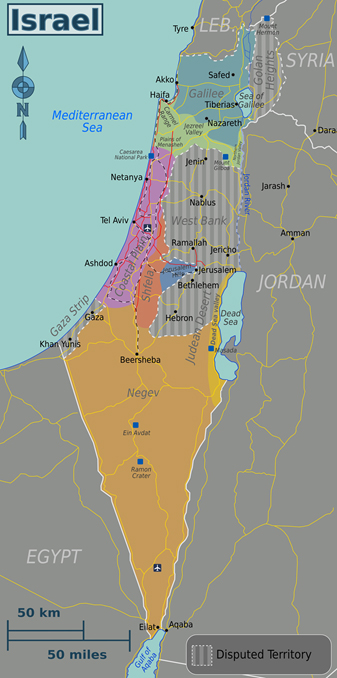The Battle of Mount Gilboa: King Saul’s Defeat and Death
The Battle of Mount Gilboa (circa 1050 BC) was a turning point in Israel’s military and political history. The Israelite and Philistine armies would once again engage in exchanging bloodshed. However, the reason as to why the Philistines marched into Israelite territory is uncertain. Chapters 29:1-2 and 31:1-3 of I Samuel are silent concerning why the Philistines assembled an army and entered Israelite territory. It can be speculated that the Philistine invasion aimed to take control of the trade route that passed through their lands along the coast and through the Israelite-controlled Jezreel Valley. This implied that the portion of the trade route passing through Israelite lands, which is a major artery connecting the north with Egypt further to the south, was a dangerous route to traverse. Merchants complained that goods being exported or imported did not arrive at their final destinations. In other words, the local Israelites were raiding the trade route. While forcefully taking control of the trade route would have alleviated the pressure on commercial traffic, it also allowed the Philistines to open the agricultural market in the region.

Map indicating Mount Gilboa and the Jezreel Valley in green (CC BY-SA 3.0)
Positioning the Troops
It was also during this time that David, the soon to be king of Israel, was away fighting the Amalekites. Besides David being on King Saul’s mind, he now had to prepare to battle the Philistines after receiving information from his spies operating in Philistia of their intentions to confiscate the Jezreel Valley. The Philistine army assembled near the coast at Aphek, which is roughly 35 to 40 miles (56.32 – 64.37 kilometers) south of Mount Moreh. Once assembled, the Philistines would move parallel with the Judean ridge until they came to Carmel mountain range, which they would cross using one of three passes. The Philistine commanders understood that if they were to take the southern pass, which would have been the faster route across the plain of Dothan, they would risk being ambushed because of its proximity to Judea and if they took the northern pass, it would take much longer to reach their target. Therefore, they probably took the middle pass, which provided great cover due to the steep hills and woods. Known as the Wadi Ara, the pass leads into the Jezreel Valley. It also provided further security since the Philistine fortress of Megiddo was nearby.
Like this Preview and want to read on? You can! JOIN US THERE ( with easy, instant access ) and see what you’re missing!! All Premium articles are available in full, with immediate access.
For the price of a cup of coffee, you get this and all the other great benefits at Ancient Origins Premium. And - each time you support AO Premium, you support independent thought and writing.
Cam Rea is an author and military historian. He has written numerous articles for Ancient Origins, Classical Wisdom Weekly, and has authored several books, including: The Wars of Israel: A Military History of Ancient Israel from the End of Judges to Solomon
Top Image: The Suicide of Saul by Pieter Brueghel the Elder (1562) (Public Domain)
By Cam Rea




















